The SCOTT Genius has already proven itself in our group test of six high-end trail bikes, coming out on top. But how does it perform long term? Where are the bike’s limits and what weaknesses reveal themselves after a year of abuse? Our test rider Gregor found out.

A quick look at the data and it’s clear that the Scott Genius means business. 29″ wheels, 150 mm of travel, a slack 65° head angle; all combined with Scott’s Twinloc technology. It promises to be extremely versatile, which is why Gregor took it everywhere from relaxed rides on his home-trails to proper downhill tracks.
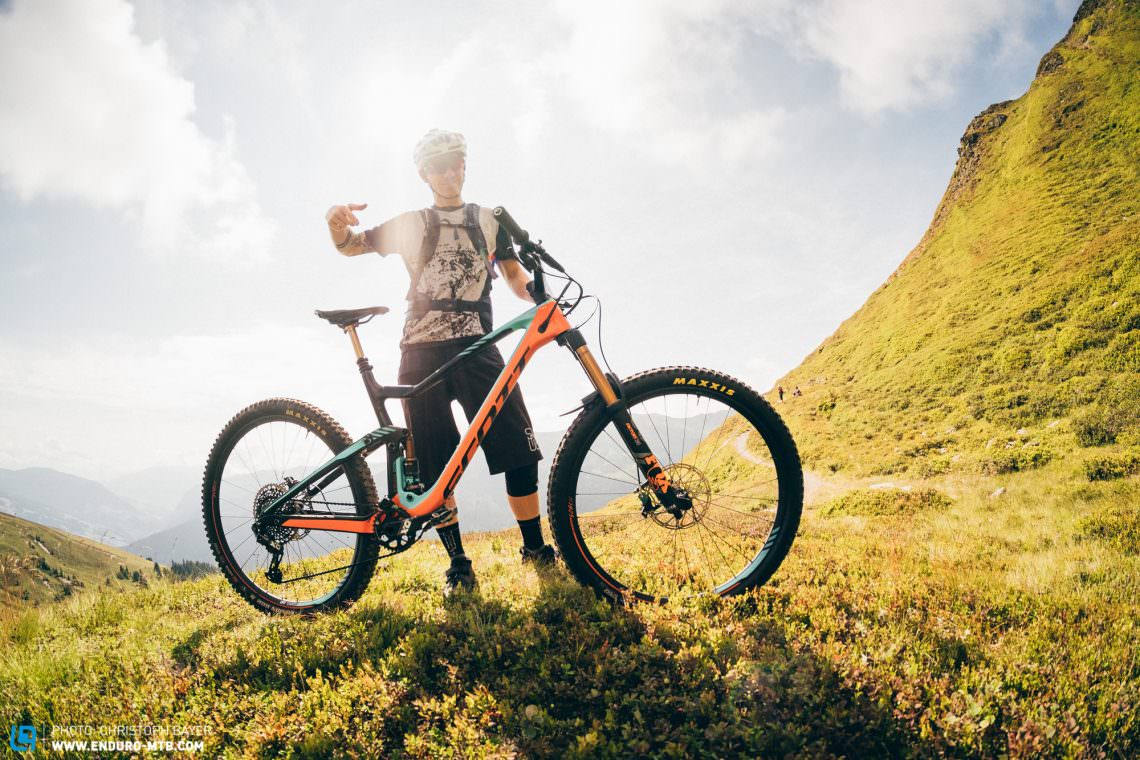
The Scott Genius in detail
With the current Genius series, Scott has succeeded in creating one of the most visually appealing frames. There are no wild links or stays disturbing its sleek profile. The shock is placed very low, just above the bottom bracket, protected from any kind of flying debris. Although the bulge beneath the shock collects a lot of dirt. Right next to it you’ve got a lot of space for a water bottle. In our case, we used the Syncros Matchbox Tailor Cage, which offers loads of space for integrated tools. All cables are routed internally, and despite the two additional cables for the Twinloc system it’s possible to get the cockpit to look tidy – a little bit of insulation tape can work miracles.

The FOX 36 fork comes with a perfectly integrated Syncros mudguard. Without question, the aesthetic highlight, however, is the one-piece stem and handlebar combo. The handlebar and stem of the Syncros Hixon SL iC are made of one piece of carbon to optimally distribute the forces on the material and to save weight at the same time. The idiosyncratic look takes a little bit of getting used to, but we found the futuristic design very attractive. The geometry of the handlebar was spot on for Gregor also. It’s a good thing too since the height can only be adjusted by means of spacers.

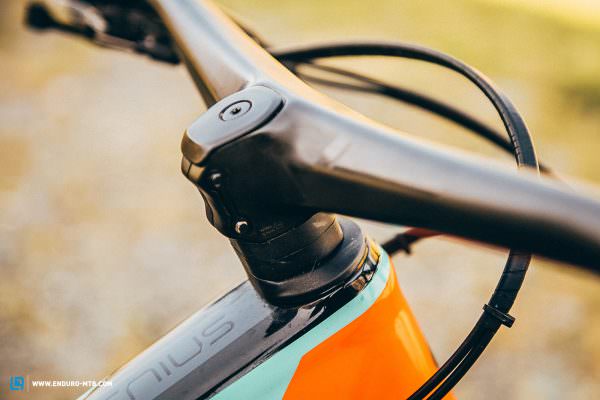
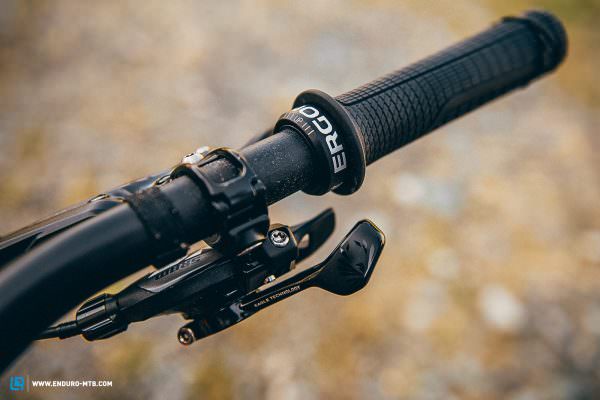
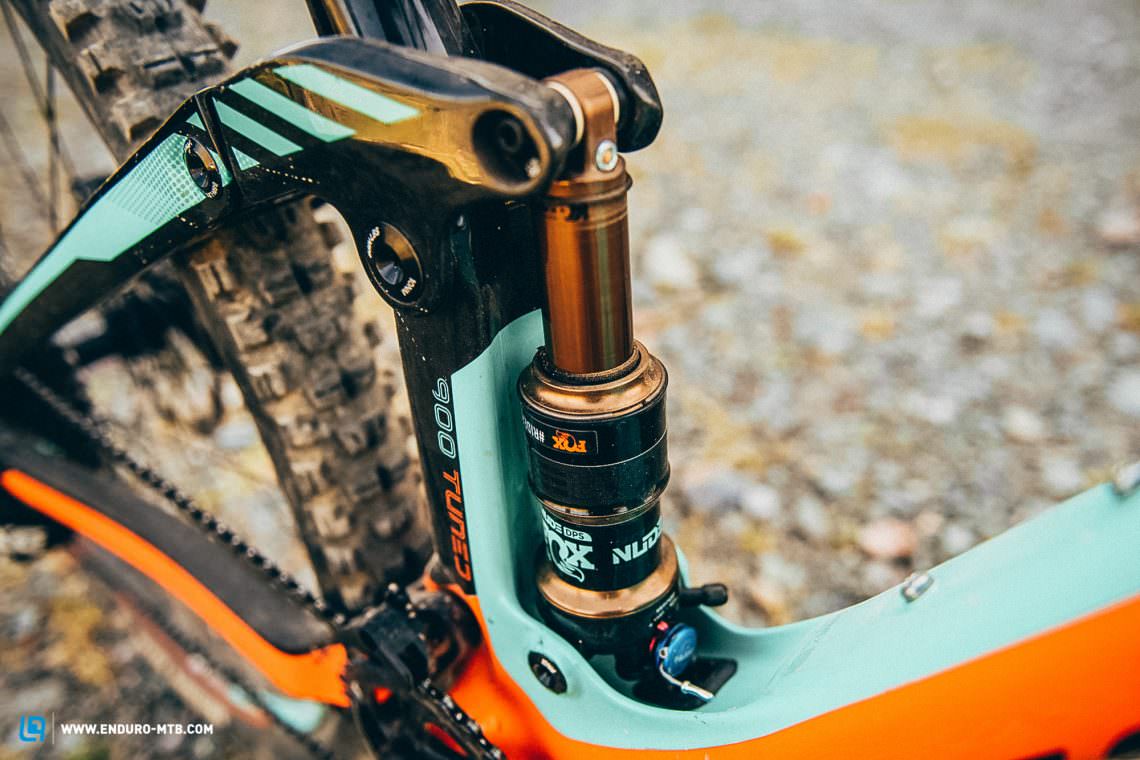
The Scott Genius on the Trail

Get on and go, that about sums up Gregor’s first ride on the Genius. No geeking out on the setup, simply adjust air pressure and rebound and you’re ready to hit the trails.
The sitting position is very balanced and central. Everything is where it should be, so you’ll immediately feel comfortable. The Twinloc lever takes some to time adjust to, as it’s exactly where the shifter/dropper lever usually is. But despite numerous levers on the left side, the Twinloc system and the dropper lever are sufficiently easy to operate.
And it’s precisely that which makes the bike stand out. The three-step Twinloc fork and shock adjustment works brilliantly; descend (downhill/open) – traction control (trail mode) – lockout (road, level). Even Gregor, who is an advocate of the classic cable-free adjustment levers, had to admit how easy the system is to use.
On my one-hour home trail lap, I used the Twinloc system about 30-40 times.
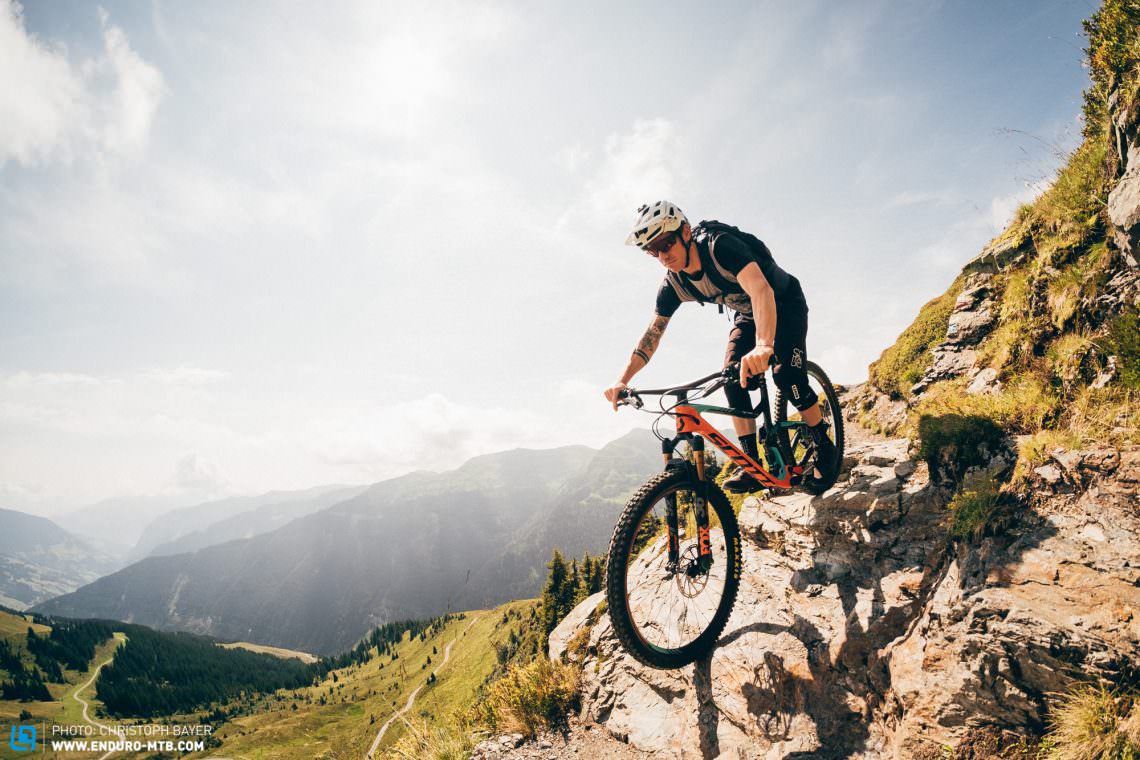
The Fox suspension is known to work brilliantly. The Fox 36 fork with the Fit4 cartridge responds sensitively, giving us nothing to complain about. The fork’s basic internal high-speed compression setup is very suitable for modern trail bikes. After initial tests with a different number of volume spacers, Gregor stuck to the stock setup. We adjusted the low-speed compression a little bit depending on the trail. The Fox NUDE shock suits the rear linkage perfectly. To get the most out of the rear suspension, the shock should be set up with at least 30% sag. In “descend” mode, however, a little more compression damping would be desirable in order for it not to wallow quite as much in corners and through compressions. Unfortunately, this can’t be adjusted on the specced NUDE shock. As a result, the bike loses some of its pop in certain riding situations. If you ride the bike with less sag the suspension becomes more supportive, but its sensitivity suffers considerably and you won’t be able to make proper use of the available travel. SCOTT has already solved this issue: The 2019 Genius comes with a new shock that features an external adjustment knob which allows you to change the rear-end progression without opening the shock. Additionally you can fine tune the air volume of the new shock with volume spacers.

The initially “aggressive” seeming geometry feels very balanced on the trail, and the bike lets itself be manoeuvred with ease. The position of the handlebar, however, is a bit too low. And since the handlebar/stem combination was already at its maximum height with two 10mm spacers, there is nothing more we could do in terms of adjustment.

Since EWS racers use the exact same frame, Gregor wasn’t afraid to give it all he had. The bike, however, remained unimpressed by his efforts. Day-long rides at the bike park with large parts downhill track didn’t faze it in the least. Of course, you’ll notice in some places that you’re not riding a downhill bike, but the Genius’ versatility is surprising. If the shock is set up with enough sag, the bike makes good use of the 150mm of travel. A significant amount of end progression prevents almost all bottoming out. However, the bike still feels most at home on normal trails. Long, rough high-speed sections demand a lot from the rider and bike, requiring skill and experience. The low weight of the bike is very noticeable in demanding terrain, making the Genius feel somewhat restless at top speed.
Climbing
The seat tube angle of the Scott Genius offers a very comfortable sitting position, which combined with the Twinloc system results in a very capable climber. If you’re riding on a road or a flat trail, you can lock the suspension out completely, giving you the feeling of sitting on a hardtail. When things get a bit more technical, simply pop the lever into trail mode and the bike will be generating more grip without losing too much uphill performance.



Traction mode is the right choice for technical climbs. By reducing the travel, the bottom bracket height increases, yet the bike still provides sufficient traction. Perfect!
You’ll have the most grip in open mode, but the bike will tend to rock slightly when pedalling and you’ll be more likely to hit your cranks and pedals on exposed obstacles. Long climbs feel relaxed and easy. Because of the slow rolling tyres, however, it doesn’t sprint like an XC bike. A slightly lighter tyre choice would make the Genius an even faster climber. Once you reach the top, flip the Twinloc lever with your thumb and, tadaa – downhill mode.
Adjustments made throughout the season
– Schwalbe NobbyNic replaced with Maxxis DHF 3C 2.5 and DHR 3C 2.4
–> The tyres are one of the weaknesses of the Genius. These quickly reach their limit in aggressive cornering and soft ground. Also, they lack puncture protection
– SRAM Guide RSC 180/180mm replaced with 200/200mm rotors + Trickstuff pads
–> 180mm rotors are too small for a 29-inch trail bike. They’re big enough for riding around on flat or only mildly hilly terrain, but as soon as you hit a steep downhill section longer than 150 m, you’ll definitely want more braking power
– SRAM Guide RSC replaced with SRAM Code RSC
–> Despite Gregor meticulous bleeding them, the Guide brake had a spongy pressure point and offered too little power on long descents
– FOX 36 150 mm conversion to 160 mm travel
–> Primarily triggered by the too low front end, we installed a 160mm air piston in the Fox fork. This brings the front up by a further 10mm and makes the bike even more potent on descents
– sticking 3M Mastic tape on the seat stays
–> The chain damaged the paint on the seat stay near the cassette. A 10 cm piece of rubber tape provides sufficient protection
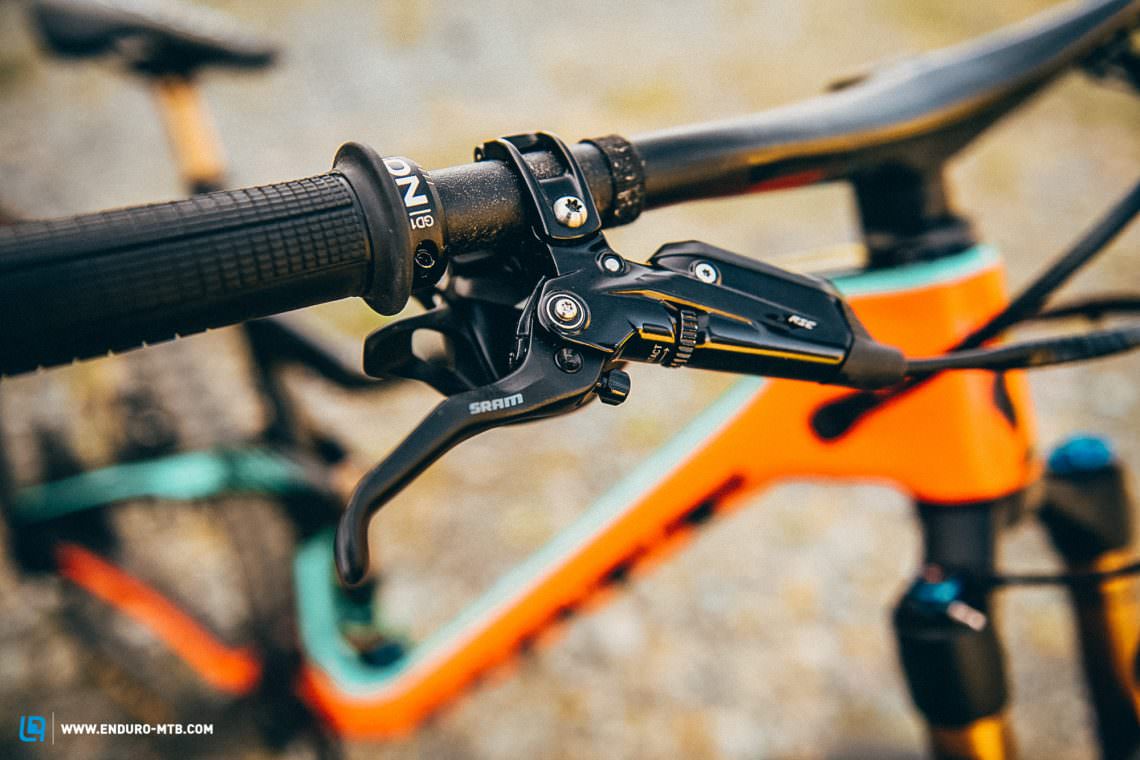
Defects
There were no significant defects in the course of our long-term review. However, the parts listed above did not do justice to the potential of the bike and were swapped. Also worth mentioning is the poor quality of the paint on the down tube – we expected more here.

What else could be optimised
– The 1.9 kg DT Swiss M1825 wheels feel quite sluggish. A DT Swiss XM1501 Spline would have been the better choice and would have been completely sufficient.
– Syncros Hixon SL iC handlebar/stem combination in different riser/width variants.
Conclusion
Even after a season of long-term testing, the SCOTT Genius 900 Tuned impressed with an excellent combination of climbing efficiency and downhill potency. The geometry is balanced, the suspension works very well and the Twin-Loc system is extremely practical. To exploit the full potential of the bike, however, some modifications were necessary. Good that SCOTT will be making a few improvements for 2019. Despite giving it all we had, the bike didn’t show any defects or excessive wear.
For more information head to scott-sports.com

Did you enjoy this article? If so, we would be stoked if you decide to support us with a monthly contribution. By becoming a supporter of ENDURO, you will help secure a sustainable future for high-quality mountain bike journalism. Click here to learn more.
Words: Gregor Alff Photos: Christoph Bayer









